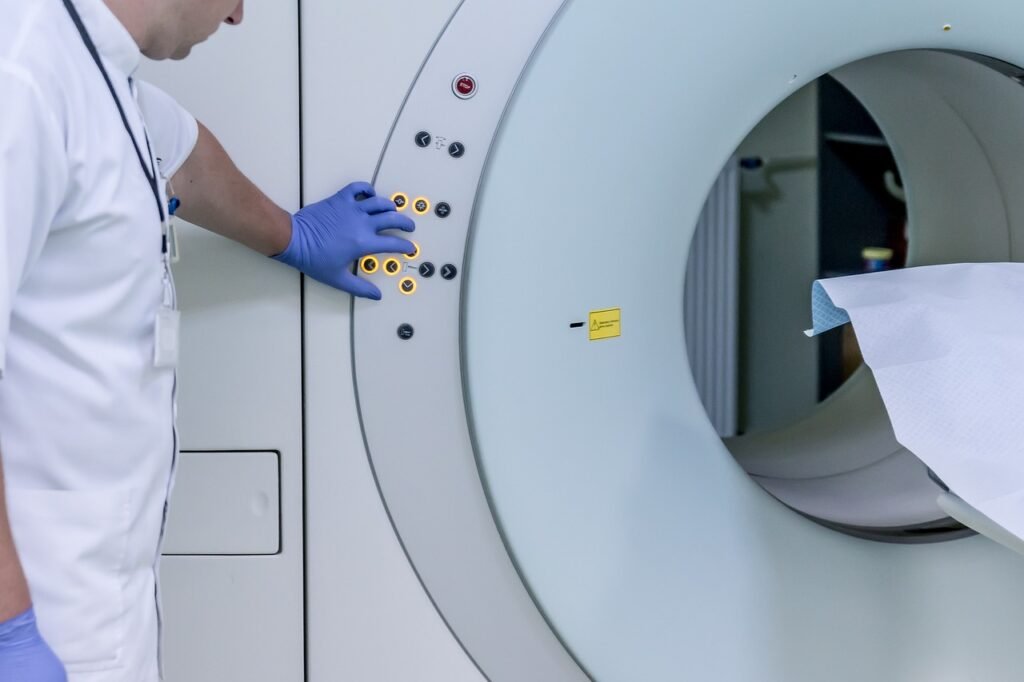Prostate cancer screening starts when the prostate-specific antigen (PSA) levels of your blood go higher. If your PSA levels are elevated, your doctors start off with a biopsy to find out the presence of cancer. In biopsy, the doctor inserts a needle into the prostate and takes out several tissue samples that usually go under a microscope. There are many other limitations to this method alongside the potentials of overdiagnosis and overtreatment. However, some recent studies, including large European surveys, are experimenting with less-invasive options, such as screening for prostate cancer with MRI (magnetic resonance imaging) scans, and are trying to find the most effective mode of diagnosing prostate cancer without the need of performing a biopsy.

The Challenge of Systematic Biopsissth”)}({_}?ạ”
This is why biopsies, in spite of their great efficiencies in prostate cancer detection, leave much to be desired. One tormenting issue is overdiagnosis. In essence, that means diagnosing some men carrying slow-growing low-grade cancers that would never bring fatality in their life. Most of these cancers will remain quiescent throughout his life, albeit some of the treatment repercussions asso
Moreover, biopsies have their risks in the forms of infection, bleeding, and pain; the average man who undergoes a regular biopsy gets 12 samples taken from almost every part of the prostate…the biopsy might also fail to reveal little or early-stage cancers. Consequently, in simple terms, does a more effective and less invasive way for prostate cancer detection exist?
The Heretical Introduction of MRI-Targeted Biopsies
MRI scans have come into view for the past few years as an interesting alternative or handmaiden in the service of the traditional biopsy. MRI preserves innovative technology in its description of a solid mass. Therefore, if one opts for MRI with the ability to detect some suspicious places on the prostate, these are further detected for cancer. Here is a situation in which indeed if suspicions lead to a further biopsy, it is now located in the suspicious areas only. This incidence is called an MRI-targeted biopsy.
The use of MRI-targeted biopsies is faring well in the aspect of prostate cancer diagnosis. They help to promise only local benefit of focus, avoidance of unnecessary biopsies, and therefore additional over diagnoses. However, there is still a concern that What if a cancer is missed by MRI imaging in its early stage, which could have been captured by a traditional biopsy?
A Study Shows Positive Promising Outcomes
A large Swedish study recently provided encouraging evidence for the speculation that MRI scans, in some cases, could substitute for traditional biopsies for prostate cancer screening. This research project, conducted with 38,000-plus men ages 50-60, looked at the performance of MRI in picking up prostate cancer in cases where PSA levels were raised.
The study’s methodology was airtight. The participants with PSA levels of 3.0 ng/mL or greater were randomly allotted into two groups:
Systematic Biopsy Group: After getting an MRI scan, men in this group were subjected to a systematic biopsy. In cases where the MRI disclosed any sign of a lesion that was of suspicion, then a biopsy was taken using the systematic as well as the targeted approaches.
MRI-Only Group: Here, those who participated were given just an MRI scan as their screening test. If the MRI revealed any suspicion on any parts of the prostate, then the appropriate biopsies were drawn; however, systematic biopsies were not undertaken.
The subjects were followed within a median of 3.9 years. Repeat screenings were done at two, four, and eight years. The outcomes were quite enlightening.
What Were the Findings from the Study?
Cancer was detected in 185 patients with MRI biopsy, while there were 298 cases with casual SKB. Yet, the systematic biopsy group found that many more unimportant decisions were made, i.e., 159 cases of them compared to 68 from the MRI-targeted biopsy group.
From this work the study group was able to show that the risk of detecting an insignificant cancer was 51 percent lower in patients under MRI biopsy than that under systematic biopsy. This attribute makes it an important clinical meaning, in the understanding that in one real prostate developed over the years to life and death with a slow and unnecessarily inflicted treatment on the case in question.
The number of men who had clinically significant, aggressive cancer in either group was very small. The systematic biopsy group saw 14 men (0.2%) while eight men (0.1%) were diagnosed in the MRI-targeted biopsy group. This explains that even without the backing of the systematic biopsy, the MRI-targeted strategy had a high ability to select out the most clinically important prostate cancer cases.
What’s Being Said by Experts
A number of experts consider the outcome of this study as a big step forward for MRI scans in prostate cancer detection. Dr. Marc Garnick, a professor of medicine at Harvard Medical School, observed that this study was highly supportive in suggesting that the MRI could one day replace traditional biopsies for men, who have abnormal PSA levels. Use of MRI as the first-line diagnostic tool is already becoming popular in Europe; this study could help widen its use in the United States as well.
Nonetheless, caution still prevails: the decision to forgo biopsy in men negative on MRI needs individualized attention, per Dr. Boris Gershman, a urologist at Beth Israel Deaconess Medical Center. In other words, men with high PSA levels need to have a biopsy done, even if their MRI does not show any suspicious areas.
Conclusion: The Prostate Cancer Screening and the Prospective-Prospective
While the results of this Swedish study show promise, a lot of research needs to be done to establish where MRI could replace biopsies completely in prostate cancer screening. It seems for now that MRI will become an indispensable tool in the diagnostic process, eventually freeing us from the nuisance of unnecessary biopsies and even overdiagnosis of slow-growing cancers. In the future, perhaps crafted best, medical technology would open a pathway to less invasive, more precise, and more efficient means of screening for any prostate cancer identified that truly requires treatment.
In the world of medical advances, the new approach actually provides a hopeful path for better-directed and minimally invasive diagnosis by prostate cancer screening for men. However, a conscious decision to adopt any particular method should be made in consultation with a healthcare provider, based on individual risk factors and medical history.


